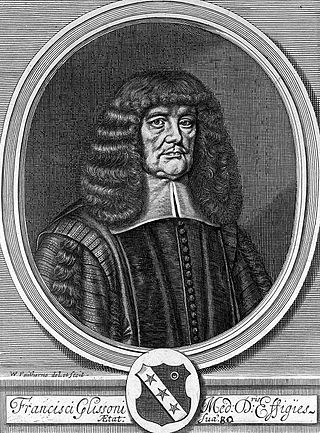Related Research Articles

1616 (MDCXVI) was a leap year starting on Friday of the Gregorian calendar and a leap year starting on Monday of the Julian calendar, the 1616th year of the Common Era (CE) and Anno Domini (AD) designations, the 616th year of the 2nd millennium, the 16th year of the 17th century, and the 7th year of the 1610s decade. As of the start of 1616, the Gregorian calendar was 10 days ahead of the Julian calendar, which remained in localized use until 1923.

1673 (MDCLXXIII) was a common year starting on Sunday of the Gregorian calendar and a common year starting on Wednesday of the Julian calendar, the 1673rd year of the Common Era (CE) and Anno Domini (AD) designations, the 673rd year of the 2nd millennium, the 73rd year of the 17th century, and the 4th year of the 1670s decade. As of the start of 1673, the Gregorian calendar was 10 days ahead of the Julian calendar, which remained in localized use until 1923.
The year 1706 in science and technology involved some significant events.
The year 1798 in science and technology involved some significant events.
The year 1774 in science and technology involved some significant events.
The year 1713 in science and technology involved some significant events.
The year 1677 in science and technology involved some significant events.
The year 1652 in science and technology involved some significant events.
The year 1645 in science and technology involved some significant events.

Kazimierz Siemienowicz was a general of artillery, gunsmith, military engineer, and one of pioneers of rocketry. Born in the Raseiniai region of the Grand Duchy of Lithuania, he served in the armies of the Polish–Lithuanian Commonwealth and of Frederick Henry, Prince of Orange, the ruler of the Dutch Republic. No portrait or detailed biography of him has survived and much of his life is a subject of dispute.

Francis Glisson was a British physician, anatomist, and writer on medical subjects. He did important work on the anatomy of the liver, and he wrote an early pediatric text on rickets. An experiment he performed helped debunk the balloonist theory of muscle contraction by showing that when a muscle contracted under water, the water level did not rise, and thus no air or fluid could be entering the muscle.
Events from the year 1677 in England.
Assuerus Regimorter or Regemorter, M.D, (1614–1650) was an English physician, an early researcher into rickets.
Nationality words link to articles with information on the nation's poetry or literature.

Daniel Whistler (1619–1684) was an English physician.
Nathan Paget (1615–1679) was an English physician, active during the English Civil War, under the Commonwealth and the Protectorate, and after the Restoration. Despite being a mainstay of a generally conservative profession, he was interested in the experimental methods of the Enlightenment. Although from a strongly Presbyterian background, he seems to have developed radical political and religious sympathies.
Henry Paman (1626–1695) was an English physician.
The year 1554 CE in science and technology included a number of events, some of which are listed here.
William Rutty M.D. (1687–1730) was an English physician.
George Joyliffe (1621–1658), sometimes Latinised as Iolivius or Jolivius, was an English anatomist and physician. He discovered the lymphatics of the liver in collaboration with Glisson and was one of three to have discovered the lymphatic system independently at about the same time.
References
- ↑ Giglioni, Guido (2004). "Glisson, Francis (1599?–1677)". Oxford Dictionary of National Biography . Oxford University Press. doi:10.1093/ref:odnb/10819 . Retrieved 2012-01-26.(subscription or UK public library membership required)
- ↑ Nowak, Tadeusz (1969). Kazimierz Siemienowicz ok.1600-ok.1951 (in Polish). Warsaw: MON Press. p. 182. OCLC 254130686.
- ↑ Greeley, Ronald; Batson, Raymond (2001). The Compact NASA Atlas of the Solar System . Cambridge University Press. p. 378. ISBN 9780521806336.